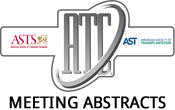Long-Term Risk of ESRD Attributable to Live Kidney Donation: Matching with Healthy Non-Donors
Johns Hopkins School of Medicine, Baltimore, MD
United Network of Organ Sharing, Richmond, VA
Johns Hopkins School of Public Health, Baltimore, MD
Meeting: 2013 American Transplant Congress
Abstract number: 565
Background Higher rates of ESRD post-donation have been reported in African-American donors than in white donors, but no studies have compared ESRD incidence in donors to ESRD incidence in comparable non-donors. ESRD risk attributable to donation is unknown.
Methods: We matched a cohort of 96217 live kidney donors (reported to OPTN between 1994-2011) to healthy non-donor controls drawn from the NHANES study, using an incementally expanding radius matching algorithm that we have previously published (JAMA 2010) based on age, gender, race, education, BMI, systolic blood pressure, and smoking history. We then linked both donors and controls to CMS data to obtain ESRD outcomes. Kaplan-Meier curves were used to compare 15-year ESRD incidence, overall and separately among racial/ethnic subgroups. A novel bootstrap method was used to assess statistical significance.
| Live donors | Matched controls | |
| All races | 0.31 | 0.04 |
| Caucasian | 0.23 | 0.00 |
| African-American | 0.75 | 0.24 |
| Hispanic | 0.33 | 0.07 |
Results: ESRD incidence at 15 years was 8x higher for live kidney donors (0.31%) than for healthy matched controls (0.04%) (p<0.05, Table 1). Higher incidence was observed among donors than controls in every racial/ethnic group. Both among donors and among controls, African Americans had the highest incidence of ESRD, and Caucasians had the lowest incidence. Fifteen-year incidence was less than one percent among all racial/ethnic subgroups.
Conclusions: Live kidney donors had higher rates of ESRD than matched controls, overall and across racial/ethnic subgroups. However, absolute risk of ESRD within fifteen years of donation is low in all subgroups.
To cite this abstract in AMA style:
Muzaale A, Massie A, Wainright J, McBride M, Wang M, Segev D. Long-Term Risk of ESRD Attributable to Live Kidney Donation: Matching with Healthy Non-Donors [abstract]. Am J Transplant. 2013; 13 (suppl 5). https://atcmeetingabstracts.com/abstract/long-term-risk-of-esrd-attributable-to-live-kidney-donation-matching-with-healthy-non-donors/. Accessed December 19, 2025.« Back to 2013 American Transplant Congress
